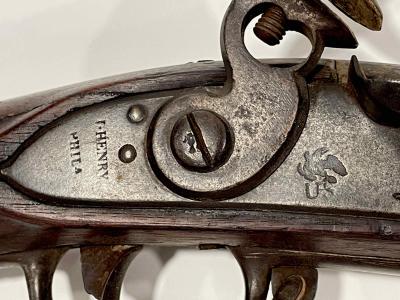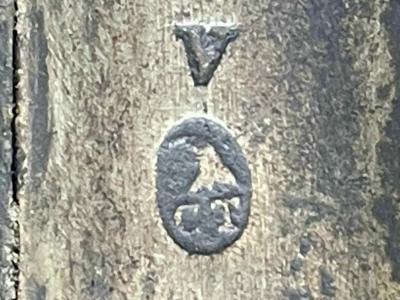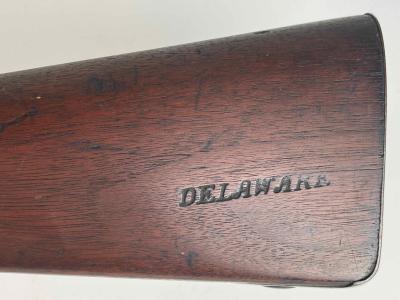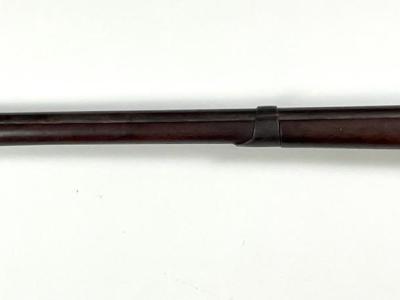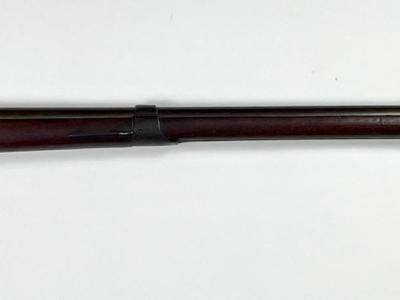Musket
Philadelphia, Pennsylvania
1808-1812
Maker
John Joseph Henry (1786-1836)
Measurements
59-1/4 in x 5-3/4 in x 2-3/4 in
Materials
Walnut, steel, iron
Credit Line
Historic Odessa Foundation, gift of H. Rodney Sharp
Accession Number
1959.4036
Inscription
“I·HENRY / PHILA” and “US” with an impressed eagle is stamped into the lockplate. The stock is branded "DELAWARE." Proofmarks--a "V" above an oval with an eagle head above "CT"--are stamped into the barrel at the breech.
Condition Notes
The stock split apart along the grain where it attaches to the barrel.
Provenance
Ex coll. H. Rodney Sharp
Comments
This musket has a smooth bore (the inside of the barrel), rather than a bore with rifling. The walnut stock is a full stock, namely on that extends to the end of the barrel, or muzzle. Three iron barrel bands hold the barrel firmly onto the stock. They also hold the ramrod in its place. Swivels for a swing are at the front of the trigger quard and on the middle barrel band.
When this muzzle-loading, smoothbore musket was loaded through the muzzle, the ramrod was used to tamp the load in place. The lock or firing mechanism included a trigger (protected by a trigger guard), which released the hammer. It held a piece of flint within the jaws. When the flint struck the steel frizzen and sparked, it pushed the frizzen forward exposing a pan with a bit of gunpowder in it. Sparks ignited the pan and in turn ignited the charge in the barrel by traveling through the "touch-hole" in the side of the barrel.
The musket bears the name of the maker on the lock-plate. “I·HENRY / PHILA” stood for John Joseph Henry, who had a shop in Philadelphia when the firearm was made. He was a member of an important gun-making family of Lancaster, Pennsylvania. John and his brother William were granted a United States contract in 1808 to manufacture firearms based on the Model 1808 musket. The caliber of this musket appears to be .69.
The CT and V proof marks at the breech may reference Connecticut and Virginia. The stock is branded Delaware, indicating association and possible use by Delaware troops, too.


